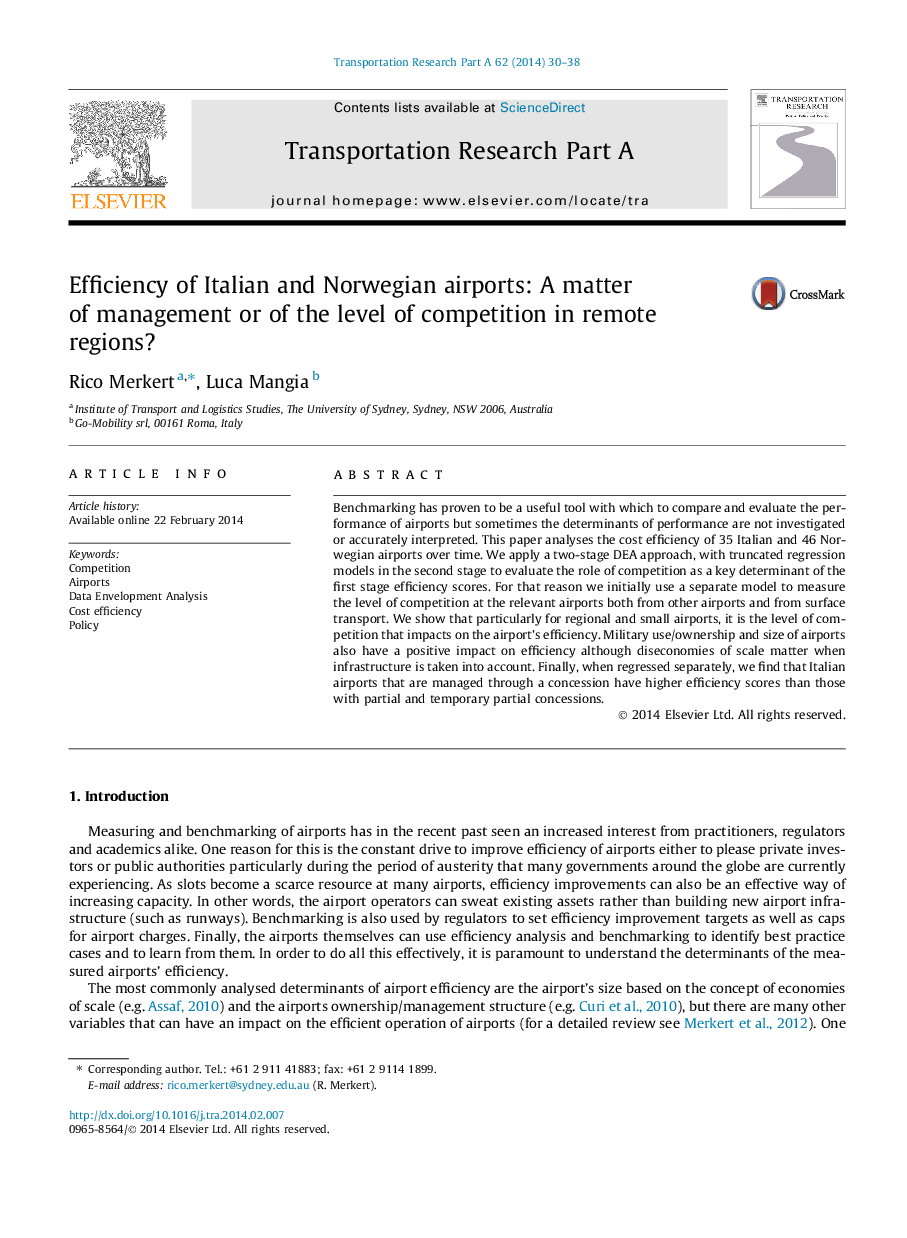| Article ID | Journal | Published Year | Pages | File Type |
|---|---|---|---|---|
| 311230 | Transportation Research Part A: Policy and Practice | 2014 | 9 Pages |
•Airport inefficiency has traditionally not been attributed to a lack of competition.•We measure the level of airport competition both from other airports and surface transport.•Results suggest that particularly for regional airports the level of competition impacts on airport efficiency.•Diseconomies of scale and a positive impact on more market oriented concession models.
Benchmarking has proven to be a useful tool with which to compare and evaluate the performance of airports but sometimes the determinants of performance are not investigated or accurately interpreted. This paper analyses the cost efficiency of 35 Italian and 46 Norwegian airports over time. We apply a two-stage DEA approach, with truncated regression models in the second stage to evaluate the role of competition as a key determinant of the first stage efficiency scores. For that reason we initially use a separate model to measure the level of competition at the relevant airports both from other airports and from surface transport. We show that particularly for regional and small airports, it is the level of competition that impacts on the airport’s efficiency. Military use/ownership and size of airports also have a positive impact on efficiency although diseconomies of scale matter when infrastructure is taken into account. Finally, when regressed separately, we find that Italian airports that are managed through a concession have higher efficiency scores than those with partial and temporary partial concessions.
